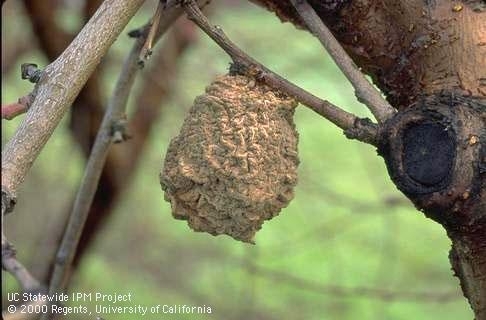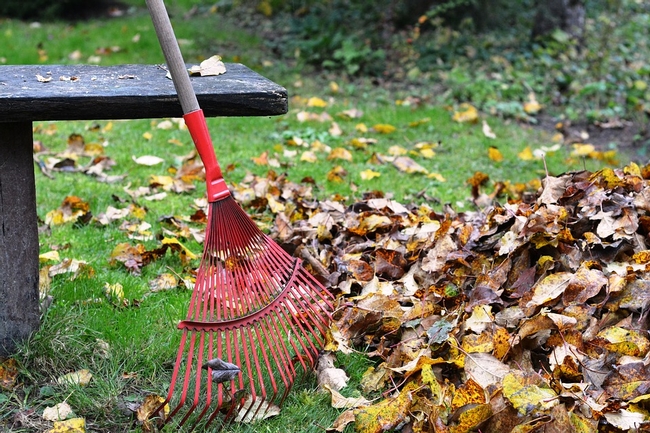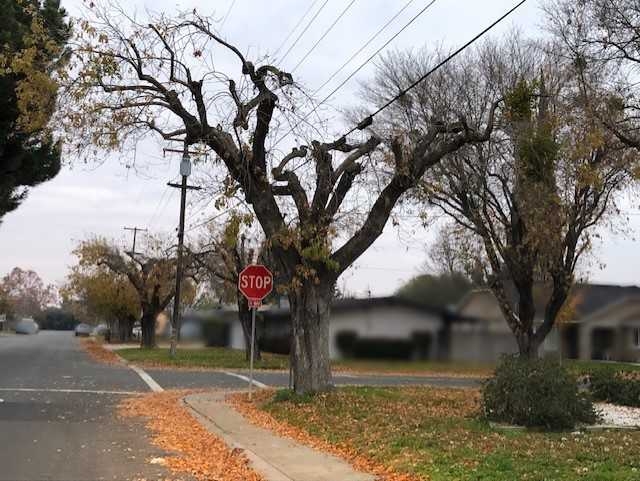- Author: Ed Perry
Did you know that fallen leaves can become a valuable garden resource? You can turn these leaves into compost. Although low in essential plant nutrients like nitrogen, the leaves still contain small amounts of all the nutrients plants need and are a valuable source of soil-improving organic matter.
Get started by chopping the leaves into smaller pieces before adding them to the pile. You can use a chipper or a shredder if you have one. Otherwise, run over them with a lawn mower and then mix them into your compost pile. If you have a lot of leaves, you can store them after shredding in garbage bags or containers, then occasionally layer them into your compost pile over the winter to add air to the pile.
Sometimes certain green materials, like grass clippings, become matted in the compost pile. When this happens oxygen is excluded, and the composting process may stop. Adding leaves helps keep the grass clippings fluffed up and aerated.
If you're new to composting, keep in mind that the decomposition process works best if you mix equal volumes of carbon-rich, naturally dry plant material (dead leaves, dried grass, straw, and woody prunings) with nitrogen-rich green plant material (grass clippings, wilted flowers, green prunings, weeds and fruit and vegetable waste). This mixture allows a “carbon to nitrogen” ratio of 30 to 1, which is ideal for efficient compost production. You can produce compost slowly or quickly. Here are two methods:
The Slow Method
Build a pile of organic materials and let it stand for a year, when the compost will finally be ready for use. The advantage of this method is that it takes relatively little effort. However, some nutrients may be leached due to exposure to rainfall, and low composting temperatures may not kill some weed seeds and disease-producing organisms. For more information on this method, download the leaflet Composting is Good for Your Garden and the Environment.
Rapid Composting Method
This process produces compost in as little as 2 to 3 weeks but requires more effort. It allows you to produce large amounts of compost quickly. For more details about this method, you can download the leaflet Compost in a Hurry.
Many local nurseries and the Modesto Junior College offer hands-on composting classes. In the future, our UCCE Master Gardeners plan to offer composting classes. Keep in touch with us by signing up for our blog and following us on Facebook and Twitter @UCMGStanislaus to hear about upcoming classes and workshops.
Ed Perry is the emeritus Environmental Horticultural Advisor for University of California Cooperative Extension (UCCE) in Stanislaus County.
The University of California Cooperative Extension (UCCE) Master Gardeners of Stanislaus County are holding a free Spring Gardening Class on Thursday, February 7, 2019 from 6:00-7:30 p.m. at the Agriculture Center on 3800 Cornucopia Way in Modesto at Harvest Hall, Rooms D&E.
Come learn which vegetables to plant and when to start seeds indoors for spring planting. Examples of vegetables we will talk about include:
- Beets
- Broccoli
- Cabbage
- Carrots
- Peppers
- Tomatoes
And many more! This class is free, but please visit http://ucanr.edu/spring2019 or call Anne Schellman at (209) 525-6862 to sign up. Space is limited, so please reserve your seat today.
This family-friendly class is open to everyone. Participants will receive free seeds (while supplies last). There is plenty of parking around Harvest Hall, but please come early if you've never been to our site. There will be signs to direct you to the classroom.
If you aren't already, please follow us on Facebook or Twitter @UCCEMGStanislaus.

Winter is the time of year when many people prune their deciduous fruit trees. However, did you know that now is not the right time to prune apricot and cherry trees?
In the past, home gardeners were advised to prune stone fruit trees (cherries, apricots, plums, peaches, and nectarines) after trees lose their leaves and go dormant. However, cherry and apricot trees are more likely to be attacked by certain diseases that can be spread by rain.
Gardeners who prune cherry and apricot trees during winter create wounds that may be invaded by fungal and bacterial canker diseases. Symptoms show up in spring and summer, when infected tree limbs wilt and suddenly die with their leaves still attached, or when bark becomes discolored and limbs produce an amber-colored ooze.
This year, wait to prune apricot and cherry trees until late spring or early summer. For more information about fruit trees, visit The California Backyard Orchard.
- Author: Anne E Schellman
Have you ever seen a tree that looks like it got a bad haircut? Or was just plain unattractive? Chances are this tree was pruned incorrectly using a practice called topping. Topping is the harmful practice of cutting tree branches to stubs, causing the resulting growth to become bushier and more susceptible to breakage during storms.
In winter, the results of tree topping are easier to see. Instead of topping, consider the form of the tree and picture how you want it to look when you are finished. Here are a few things to know before you start:
- Pruning cuts create a new direction for a tree to grow.
- There are three types of pruning cuts—a thinning or reduction cut, a removal cut, and a heading cut. Each is distinctly different and is used to accomplish unique objectives
- If you prune correctly, you can “train” a young tree into an attractive form.
- Pruning to establish a strong and attractive form is best done during the first 3-5 years of a tree's life.
- Reducing the size of a large tree can be done but is usually best done by an ISA certified arborist.
- Incorrectly pruning certain fruit trees can result in trees that don't bear fruit!
Here are some resources that describe the best methods to prune landscape trees and fruit trees.
Landscape Trees
Training young trees
Thin, don't top mature trees
Pruning landscape trees
Fruit Trees
The California Backyard Orchard website lists fruit trees by species and includes pruning tips for both deciduous and evergreen fruit trees.
- Author: Ed Perry
Many gardeners are interested in knowing how winter temperatures affect garden pests. The hope is that following a cold winter–such as this year–fewer pests will survive to plague the garden. Unfortunately, both insect pests and plant diseases have ways of surviving our harshest winters. However, there are some things that you can do to lessen potential pest problems, mostly by eliminating the places where pests and disease may overwinter.
Although a few pests can migrate great distances, many come from sources within your garden or nearby areas, surviving on weeds, in crop debris, as pupae in soil, or as seeds, spores or eggs. You can also unknowingly bring some pests into your garden on infested transplants or contaminated soil or equipment.
![Codling moth larvae inside a fruit. [Credit: Jack Kelly Clark, UC IPM] Codling moth larvae inside a fruit. [Credit: Jack Kelly Clark, UC IPM]](http://ucanr.edu/blogs/StanislausSprout/blogfiles/57017.jpg)
Good common-sense sanitation practices will help to eliminate overwintering garden pests. In your fruit trees, be sure to remove and destroy old fruit “mummies” hanging in trees and pick up and destroy any fallen nuts. Old fruits and nuts often contain pests such as codling moths. It's also very important to get rid of pruned branches, especially those from your fruit trees, that might be infested with disease or borers. Bark beetles may emerge from infested branches in late winter or early spring, so be sure to dispose of prunings as soon as possible. Don't forget to treat your fruit trees, especially peach and nectarine trees, with fungicide sprays to prevent spring diseases such as peach leaf curl; oil sprays applied now will also help to control overwintering insect and mite pests on deciduous trees.
Also, remove any weeds around your garden well before planting any new crops. Not only do weeds produce seeds that may find their way into your garden, but they are also likely to harbor numerous migrating pests. For instance, cutworms, earwigs, stink bugs, thrips and certain viruses carried by aphids and leafhoppers are all pests associated with weedy areas. If you wait until your garden is planted before destroying these weeds, the pests will move into your crops. Waiting for the weeds to dry out naturally will also encourage pest migrations. Besides, it's easier to control weeds when they're seedlings, rather than waiting until they've matured and set seeds.

Good sanitation also means making sure the planting stock you're using is free of pests. Check transplants or other greenhouse stock for aphids, diseases, nematodes and other pests. Use certified seed or stock if available. Make sure any organic soil amendments you use are free of weed seeds and pathogens, and don't move soil infested with nematodes, Bermudagrass stems, or nutsedge tubers to other parts of your garden. If you're not sure whether the soil is infested with pests, it's best to not take the chance. Also, clean equipment before moving it from infested areas.
Always be sure plant debris, particularly residue from previous vegetable crops, is completely decayed or removed before planting a new crop. A good way to destroy most crop and weed residues around your garden is by composting. Composting destroys most of the pests that may be harbored in the residues.
You can download a free copy of Composting is Good for Your Garden and the Environment to learn more.
Ed Perry is the emeritus Environmental Horticultural Advisor for University of California Cooperative Extension (UCCE) in Stanislaus County.


![Oozing from fungal infection in cherry that was pruned during the cool season. [Credit: Chuck Ingels, UCCE Sacramento] Oozing from fungal infection in cherry that was pruned during the cool season. [Credit: Chuck Ingels, UCCE Sacramento]](http://ucanr.edu/blogs/StanislausSprout/blogfiles/57473.jpg)

